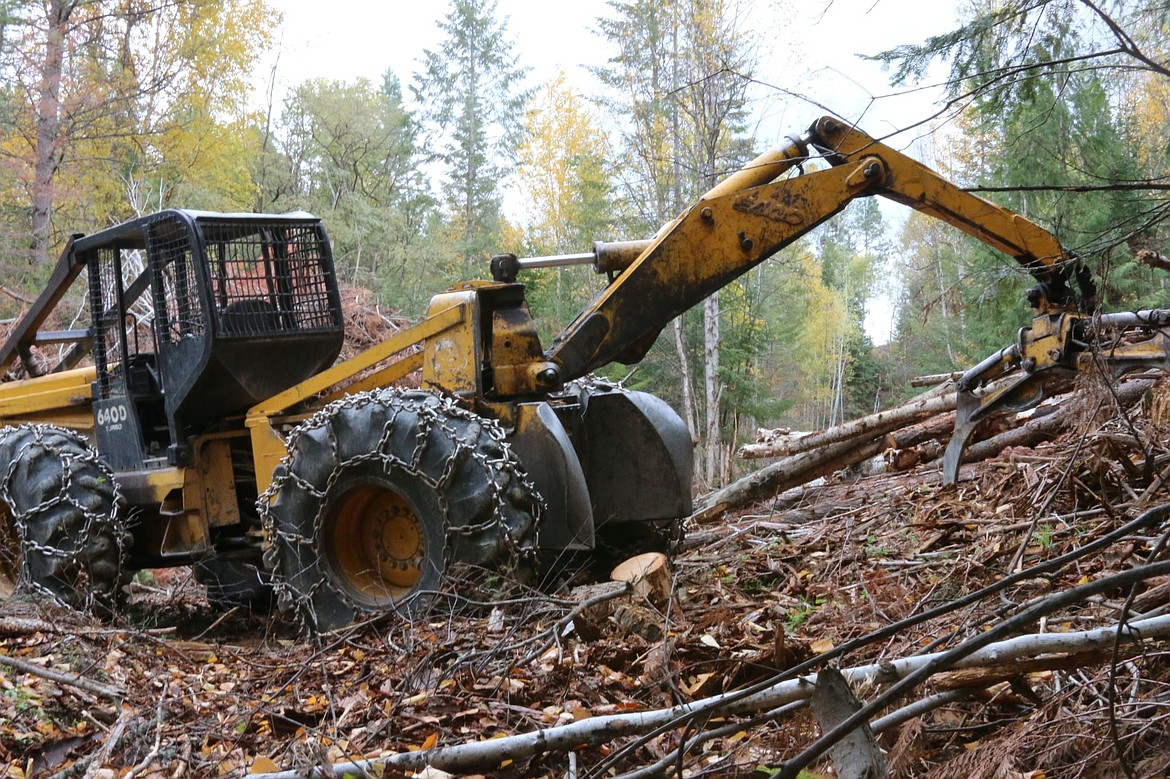How to maintain your forest
BONNERS FERRY — If you’re wondering how you can keep your forest healthy, professional forester Russ Hegedus has the answer.
Mills and loggers are always seeking logs and land to log, Hegedus said. He prepares a forestry management plan for land owners. He then assists landowners to get their property logged. Hegedus’ goal is responsible harvesting of timber.
“Timber is a crop,” said Hegedus. “Loggers and foresters have this mindset.”
Before you call the loggers, Hegedus said it is a good first step to make sure your boundary lines are clearly marked. If there is good timber on the boundary line, the loggers will take every other tree since the ownership of trees on boundary lines is disputed.
Desired species for logging include Douglas Fir, Western Larch, Grand Fir, Western Hemlock, Lodgepole Pine, White Pine, Engelmann Spruce, Sub-Alpine Fir, Ponderosa Pine and Western Red Cedar.
Foresters like Hegedus look for sick, dead and dying trees, whose health is failing in some sort of way. He said that weather changes and drought impact the trees.
“Some forests are overstocked with trees without any regards to the weather,” he said.
When making a forestry management plan Hegedus looks at the number of trees per acre and the size of the trees. The number is not a one-size fits all, said Hegedes, every piece of land is different.
“It all comes down to forest health and how to make the forest more resilient to drought,” he said.
When it comes to taking stock of the trees on someone’s land Hegedus will walk the property with the landowner. He said that people don’t really know what they have on their property when it comes to tree species, tree stock and value.
“It doesn’t matter if it is five, 10 or 150 acres, trees and other vegetation grows and is in a constant state of change,” he said.
When it comes to landowners getting their property logged, Hegedus wants it to be clear to landowners that they have to have enough logs or stock to make the logging job worthwhile to loggers. He said it is hard to move all the equipment necessary for logging on properties, adding there are added expenses of transporting the equipment from job site to job site.
“The biggest limiting factor isn’t land, or landowners; it is staff, loggers, truck drivers and the sawmill workers,” he said.
Hegedus said that when lumber prices went up the price for logs did as well. Last year landowners were in the place of need when it came to logging because of the lack of loggers, said Hegedus.
He said that there were local loggers who are booked out a year and a half for jobs.
Hegedus suggested some things for landowners to look out for when it comes to tree health.
The scolytus beetle, or the Fir Engraver Beetle, mainly attacks firs, but will also target Engelmann Spruce and Mountain Hemlock, said Nevada Division of Forestry. The beetle will enter the tree over the summer and will prevent the passage of nutrients from the top of the tree to the roots, said Hegedus.
“The bows will turn in and the beetles will work their way up the tree,” he said. “Another generation of beetles will hatch in the tree, finish it off and then move on.”
Another thing to look out for is at fall time Grand Firs change to a yellow or orange color, said Hegedus. The fir will be trying to flush nutrients from the leaves down to the roots and when that doesn’t happen it will realize it is dead, he said.

